#americans in cuba
Text
this is your daily reminder that it's been over 65 years since cuba overthrew batista's US-backed fascist dictatorship and the US is STILL keeping cuba in extreme poverty using an "embargo."
back in the 1950s, using US funds and US-trained soldiers, batista (not castro) removed most of cubans' rights, including the right to strike, censored all media, and used secret police to torture and publicly excute anyone who protested his dictatorship. In a document released by the CIA in 2005, it stated as many as 20,000 people were killed. In return, batista gave control of most of the arable land to the US. during the revolution, this land was reclaimed and redistributed, which means that USAmericans can now sue anyone who "traffics" in this "confiscated" property.
Despite US sanctions being an "embargo," the US also fines foreign companies for doing business in Cuba, meaning it's effectively a blockade. Despite Obama lightening some of these restrictions, Biden has done little to undo the tightened policies from Trump's administration.
In November, the UN called for the 31st time (!!!) for the US blockade to end, supported by 187 countries and opposed only by the US and its bestest buddy (I'll let you guess who).
Cuba has been in economic crisis for years. Monthly income in Cuba is $30-60. There is very little food and it is hard to purchase anything like toiletries, clothes, and over-the-counter medicines. Domestic production is down because they don't have the resources to sustain them. The US has been intentionally impoverishing and starving Cuba for decades, and they continue to make it clear that it is not going to stop.
So, yeah. US democracy is a joke, end the US blockade on Cuba, and fuck genocide joe.
#the americans arent gonna like this one yall#free cuba#end the US blockade#end the US embargo#hands off cuba#hands off yemen#free palestine#free puerto rico#end US imperialism#stop the US war machine
6K notes
·
View notes
Text
Back from six days in Cuba. Two nights in Playa Larga, one night at Habana Libre (national hotel) in Havana and two nights at a Casa Particular (we found on Airbnb) near the Revolution Museum (great location). Travel was hard even with the Cubacel SIM card. Hard to find a food outside of swanky restaurants, hard to walk around in the heat with a 5-yo, hard to maintain patience with spouse.
Got home late-ish last night. Back in the office today. Husband stayed home and kept baby-child too. Husband thinks he has the flu.
0 notes
Text
"Xi Jinping is personally carrying fentanyl into the US and selling it on the streets" becoming a sensible bipartisan talking point now rly solidifies my gut feel that "China/Iran/[Bad Guys] are invading us through the southern border!" is gonna become a more & more prominent bipartisan USAmerican politician talking point like. Within the year
#particularly as venezuela cuba bolivia & nicaragua build stronger ties#but particularly as AMLOs populist anti-americanism becomes more & more popular in MX#& builds an alternative mold for MX politicians to follow against the pena nieto/PRI model#'invading mexico' is going to become a more and more prominent talking point i think#gradually cnn will add more & more pros & less cons to the articles they pen abt it#monroe doctrine never ended#now that theres some kind of thaw w Venezuela their close relationship w Iran is obv gonna become more & more in the spotlight#the 'what do you mean lib? im a socialist!' libs will be very gung ho abt how the poor stupid venezuelans were tricked by their eastern way#same ppl who support cuba doing X but DPRK doing X is too far because they can defend themselves imean because theyre an evil monarchy#(dont ask them what they considered the heritibility of cubas head of state position to be before diaz canal shhh)
328 notes
·
View notes
Text

Understory Garden - May 6th 2023
#this was such a good location#eastern american native flowers#nature#forest#wild columbine#phlox#foam flowers#solomons seal#dogwood in the back#original phography#photographers on tumblr#mt cuba#Delaware#spring
466 notes
·
View notes
Text

Watson and the Shark by John Singleton Copley
#john singleton copley#art#shark#sharks#havana#cuba#brook watson#english#british#american#shark attack#history#sea#caribbean
292 notes
·
View notes
Text
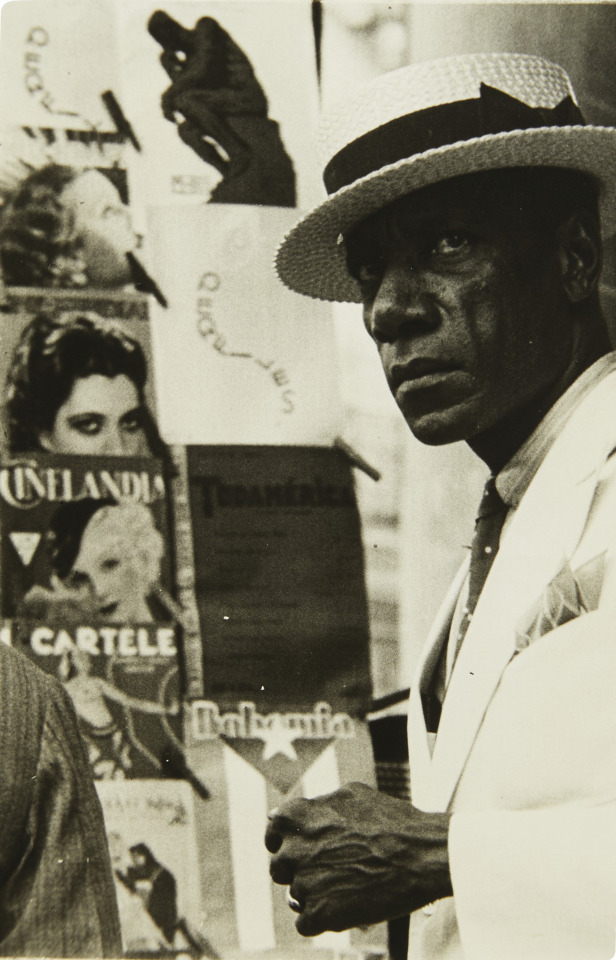
Citizen in Downtown Havana, Walker Evans, 1933
#photography#vintage photography#vintage#black and white photography#walker evans#american#1930s#1933#havana#cuba#street photography#street scene
88 notes
·
View notes
Text

“American Horror Story: Roanoke” premiered seven years ago today!





#ahs roanoke#season 6#ahs#american horror story#roanoke#ahs my roanoke#american horror story: my roanoke nightmare#american horror story roanoke#fx#evan peters#sarah paulson#kathy bates#cuba gooding jr#lily rabe#andre holland#wes bentley#denis o'hare#cheyenne jackson#angela basset#frances conroy#taissa farmiga#lady gaga#adina porter#finn wittrock#saniyya sidney#television#delicate#tv
123 notes
·
View notes
Photo

Guardian of the mangroves
A curious American crocodile (Crocodylus acutus) swims up to the photographer at Gardens of the Queen (Jardines de la Reina), an archipelago off the coast of Cuba. It has been strictly protected since 1996 and is one of the most untouched marine ecosystems in the world. “The healthy population of American crocodiles is down to the pristine condition of the mangroves and I wanted to capture close-ups of this gentle giant in its natural habitat. I hope this image can illustrate that protecting areas like this is so critical.”
By Tanya Houppermans, Cuba
Mangrove Photography Awards
#tanya houppermans#photographer#cuba#mangrove photography awards#american crocodile#crocodylus acutus#reptile#gardens of the queen#jardines de la reina#archipelago#nature
75 notes
·
View notes
Text
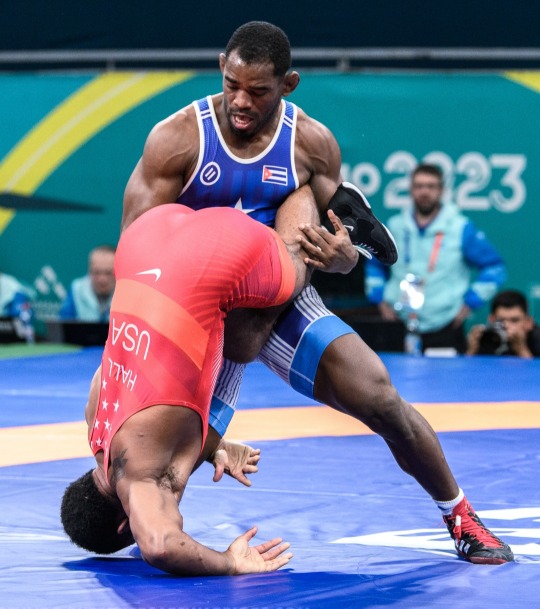
🇨🇺 Yurieski Torreblanca, cuban wrestler destroying 🇺🇸 M.K. Hall's ass and becoming MFS 86Kg gold medallist at the PanAm 2023 (credits to @higienist & www.smugmug.com)
#wrestling#muscle men#guys in lycra#men in lycra#singlet#lycra bulge#ass like that#man bulge#man butt#cuba#cuban#usa#american#pan american games
32 notes
·
View notes
Text

Santiago de Cuba; Street Scene, 1885
Winslow Homer
#Winslow Homer#american art#1800s#art#painting#art history#1880s#cuba#sunlight#santiago de cuba#architecture
144 notes
·
View notes
Text
Linguists have identified a new English dialect that’s emerging in South Florida, driven by influence from Cuban Spanish
108 notes
·
View notes
Note
It's not enough for the US and the Zionist entity to starve Gaza. Now it's Cuba's turn. The world is sick. How is this justifiable?
https://twitter.com/pawelwargan/status/1763496272722284911?t=YxvTv3Ak8KsHXQQN189IRA&s=19
Consistently, it's the same clowns every damn time.

The amount of power that the US government has over global issues needs to change. I have spoken about how the UN is a double-edged sword in many instances, and this is one of them because this is absolutely asinine. This is despicable, and sadly is not the first time the US has harmed civilians -if they allocated even a quarter of their military budget alone to support people/families who need housing, medical and dental plans, and access to food and services in their own country, NO ONE would be suffering or struggling to just pay their bills or have to make a call to not visit a hospital because of the expenses or choose between a prescription, medication, or tuition. It's beyond atrocious to me a government like this could still maintain it's grips on society across political platforms -and that goes for what is happening in Canada and any democratic country in the world. It makes me sick to my stomach. The US is starving Gaza. The US is starving Cuba just as much as Israel is.
#feminist#social justice#free palestine#us imperialism#cuba#free cuba#current events#current news#united nations#united states#israel is evil#american imperialism#american politics#us news#us politics#the us and israel are starving cuba#settler violence#global news#global politics#human rights violations#democracy
30 notes
·
View notes
Text
If you feel sexy, you look sexy.. 🇺🇸

#usa#doggyfuck#cowgirl#sexy pose#america#eat my pussy#hot as fuck#needy pussy#hook me up#xxxx#mississippi#united states#cuba#us army#usagi yojimbo#usagi tsukino#usa news#americans#lick my pussy#purple#punk#qsmp purgatory#bad bitch#bad buddy#so hot 🔥🔥🔥#hotwives#hot as hell#hot nude#cute#legs
22 notes
·
View notes
Text

Foam Flowers - Mt. Cuba, Delaware - May 6th 2023
#nature#forest#Delaware#mt cuba#foam flowers#northeastern american native plants#nature photography#original phography#spring
381 notes
·
View notes
Text
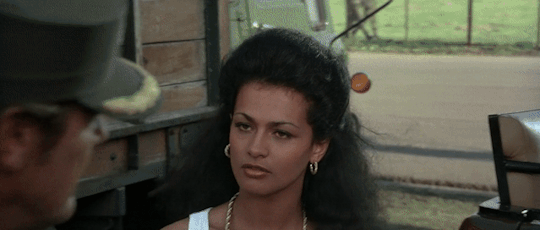
“Toro? Sounds like a load of bull.”
Octopussy (1983)
#james bond#007#roger moore#tina hudson#disguise#cuba#latin america#film#classic#pre-title#sequence#octopussy#colonel#colonel toro#south american#latin american#south america#undercover mission#cuban#airforce#air base#bianca#mi6#british#english#spy#assassin#assassins#spy film#cinema
98 notes
·
View notes
Text
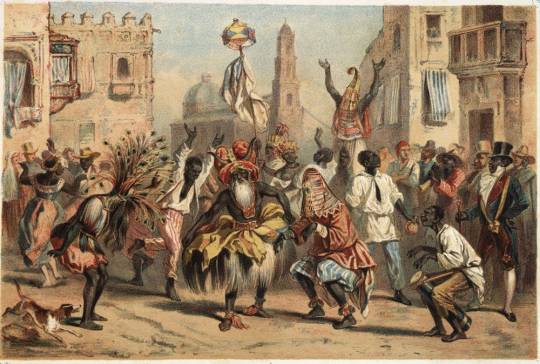
Long before it arose in New York City and became an influential style of music around the world, salsa music has its seeds in African rhythms and traditions that came to the Caribbean through the slave trade. Centuries of enslavement caused many cultural changes in Cuba, including the music that led to salsa.
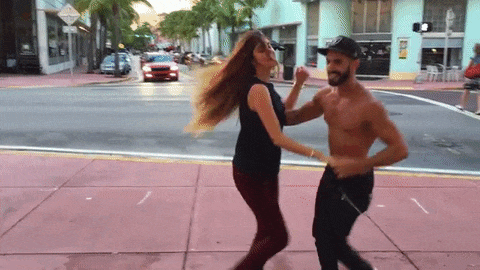
Some people know Bobby Day’s 1958 “Rockin’ Robin” or Michael Jackson’s remake but the origin of the song goes back to the days of slavery.
The majority of the Africans that were enslaved and brought to the Americas were of West African descent where the drum was used as a form of communication. In the Americas, enslaved Africans used the drum in the same way — communicating with the enslaved on distant plantations and ultimately planning uprising.
The enslavers caught wind of this and enacted a ban.
It is absolutely necessary to the safety of this Province, that all due care be taken to restrain Negroes from using or keeping of drums, which may call together or give sign or notice to one another of their wicked designs and purposes.
— Slave Code of South Carolina, Article 36
That ban went down in 1740 and soon spread throughout Colonial America.
But the beat is in the heart of the African.
We soon found other ways to imitate the sound of the drum; stomping, playing spoons, washboards, or anything other household item. We also “slapped Juba” or played “hambone” where the body became an instrument where the player slaps their thighs and chest for the drum beat. (How did young boys in 1980s Park Hill, Denver know “Hambone?”)
Although we kept the beat, we lost the tradition, a cultural marker snatched away from us.
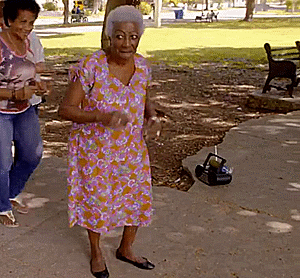
While the American enslaver worked feverishly to destroy any vestige of African culture, the Spanish enslaver of Cuba felt that it was in his best interest to allow the enslaved African to maintain his culture. In support of that, the Spanish allowed the Africans to organize Cabildos (or social groups) based on their nation of origin. Thus you had the Abakua (or Ekpe) from the nations known as Nigeria and Cameroon, the Madinga (or Malinke) from Sierre Leone, etc.
Our focus is primarily on the Lucumi, the Cabildo founded for the Yoruba of Benin and Nigeria. This lineage would be the cornerstone and origin point for what is now called “Salsa.” And what is this “Salsa?”
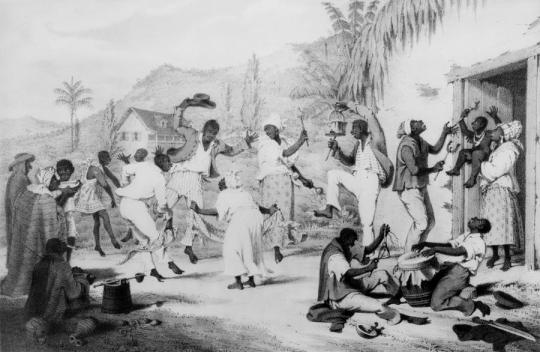
When we spoke of the drum being forbidden among the enslaved Africans in America, we forgot to mention that there was one place that didn’t enact that ban. That place was the port city of New Orleans, Louisiana — some even call New Orleans the Northernmost Caribbean city.
Similar in the way that the Spanish allowed for Cabildos in Cuba, the Louisiana enslavers permitted Sundays off and were okay with the dance and celebration so long as the enslaved African did so outside of the city limits in a place called Place des Negres (eventually known as Congo Square).
After the Civil War, Africans in America were able to get a hold of surplus brass instruments and shortly thereafter began composing music based on the popular music in the Caribbean at the time, the Cuban Habanero. Many say that this is one of the foundations of jazz music itself and the basis of the habanero, the tressilo, can be heard in second lines. Self-proclaimed jazz inventor, Jelly Roll Morton had this to say:
Now take the habanero “La Paloma”, which I transformed in New Orleans style. You leave the left hand just the same. The difference comes in the right hand — in the syncopation, which gives it an entirely different color that really changes the color from red to blue.
Now in one of my earliest tunes, “New Orleans Blues”, you can notice the Spanish tinge. In fact, if you can’t manage to put tinges of Spanish in your tunes, you will never be able to get the right seasoning, I call it, for jazz. Jelly Roll Morton
Because of those qualities, a young musical prodigy from Cuba, Mario Bauzá recognized the similarities between jazz and Cuban music straightaway. Bauzá fell in love with jazz having heard it on Cuban radio but it was his trip to Harlem, NYC in 1927 that convinced him that New York was where he wanted to be and jazz was the music that he wanted to play.
Bauzá returned to New York in 1930, immediately found work, eventually landing a gig in the Cab Calloway band. Here he brought on the legend in the making, Dizzy Gillespie, and the two became fast friends. Bauzá attempted to play his “native” music to many in the band but they dismissed it as “country” music. Gillespie, on the other hand, embraced it.
For the next eight years Bauzá played in predominately African jazz bands having seen discrimination from white Cubans. Yet he longed to start a group that incorporated the music from his home and his second love, jazz. He shot this idea to his childhood friend/brother-in-law and in 1939 at the Park Palace Ballroom the Machito Afro-Cubans would debut.
“I am Black, which means my roots are in Africa. Why should I be ashamed of that?” Bauzá said in reference to the name.
Bauzá replaced the drum kit, which at that time had only been around for 20 years, with the hard to find congas, timbales, and toms. “The timbales play the bell pattern, the congas play the supportive drum part, and the bongos improvise, simulating a lead drum”. In the 40s these drums could only be found at Simon Jou’s bakery, La Moderna, locally known in East Harlem simply as Simon’s.
Next, the Afro-Cubans needed a home and they would find that not in Harlem nor the Bronx, but instead in Midtown Manhattan, a club called the Palladium.

Salsa is a set of Afro-Caribbean rhythms fused with jazz and other styles. The truth is that its origins have always been much debated, although as a general rule it is mentioned that it comes from a fusion that came from Africa in the Caribbean when they heard European music and wanted to mix it with their drums
These origins focus especially on mambo, danzó, cha cha chá, guaracha and son montuno, later enriched with instruments such as saxophone, trumpet or trombone.
It was the Cuban exiles and those from Puerto Rico who popularized salsa in New York back in the 1950s. But it wasn't until the last third of this century that salsa dancing began to take off all over the world.
Cuba played a leading role in the origin of salsa. Already in the 1930s, melodies and rhythms from Africa were playing on the Caribbean island. Among them was the danzón, a musical piece acquired by the French who had fled Haiti.
History tells us that it was these first rhythms that were then mixed with rumbas such as guagancó and sonero to begin to create their own Afro-Cuban rhythms, including Afro-Cuban jazz, mambo, guaracha, Cuban son and montuno.
The exquisite melody of these new rhythms soon set in other Latin American countries. Puerto Rico and Colombia were the first to welcome these new sounds from the Cuban country.
However, it was not until their appearance in the United States, and more specifically in the Bronx neighborhood of New York, when these rhythms acquired a greater impact. It was the moment in which new musical instruments were added that today form an indissoluble part of salsa.
The great Cuban musicians who moved to New York along with the wave of these new rhythms created the famous tumbadoras, congas or son montuno, and were responsible for introducing trombones and guaracha.
The Origin of the Salsa Dance Steps
Once salsa was defined as a musical genre in the 1970s, the movements and steps of its dance were collected through a fusion of the African with the European.
These steps and movements of salsa fundamentally reflect the influence of the dances that the Africans brought to the Caribbean and the European dances that have been danced in Cuba since the 1930s.
So much so that the basic steps of salsa are precisely the same steps as the Cuban son, just as it also includes steps that can be seen in rumba, danzón and mambo.
The origin of these variants is in the regions where this style comes from, which are the ones that developed each dance, always under the same umbrella of the term salsa.
It is not surprising, then, that salsa is defined as the result of a series of social conditions and the evolution of a series of rhythms and melodies from Cuba, which were developed and achieved repercussion in the United States.
There are those who assure against this mixture that salsa is neither a rhythm nor a style, but rather a term that serves to represent all the music of Afro-Cuban origin that emerged in the first decades of the twentieth century.
In short, the origin of salsa has always been, and will continue to be, much discussed. American musician Tito Puente was right when he said, "Salsa doesn't exist. What they now call salsa is what I have played for many years, and this is mambo, guaracha, cha cha chá and guagancó".
#salsa#cuba#congo#nigeria#african#afrakan#kemetic dreams#brownskin#africans#afrakans#brown skin#african culture#afrakan spirituality#nigerian#nigerians#ghana#niger#cameroon#senegal#west africa#afro cuban#american#african american#african american history#american history#dance#african dance#congo dance#ekik#yoruba
11 notes
·
View notes